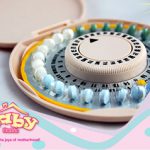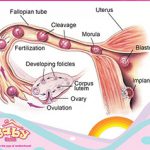SURGERY
Before getting surgery, insist on an appropriate infertility workup for both partners before proceeding with surgery. This is to ensure that you do not undergo surgery only to discover that an unrelated problem (for example, male factor infertility or failure to ovulate) will make it difficult to conceive without another type of treatment that could have been used in the first place.
• Surgery is usually recommended for the treatment for blocked or damaged fallopian tubes. Surgery may also be recommended to remove scar tissue, fibroids or endometriosis from a woman’s reproductive organs.
• In men, surgery may be suggested to open blocked passages in the reproductive tract or to treat varicose veins in the scrotum.
• To surgically reverse a tubal ligation or vasectomy. The chance of success depends on what type of procedure you had, how long ago, and other factors related to fertility in both of you such as age.
Reproductive surgery may include:
• Endoscopic surgery: involves inserting a telescope-like laparoscope through a small incision in the abdomen or a hysteroscope through the cervix. This makes it possible to avoid major abdominal surgery and speed recovery.
• Laser surgery: substitutes a laser for a traditional scalpel, but has not proven to be significantly better.
• Microsurgery: uses several techniques (viewing the area under magnification, stitching with delicate sutures) to minimize damage to healthy tissues.
FERTILITY DRUGS
Each month, the ovaries normally mature one egg, releasing it in the middle of the menstrual cycle at ovulation. Fertility drugs usually refer to medications that influence this process. Fertility drugs can be used to spur ovulation in a woman who ovulates only irregularly or not at all. In addition, the drugs are often prescribed in order to cause several eggs to mature in a single cycle. This may be done to improve the odds of conception during intercourse or in conjunction with other treatments (such as intrauterine insemination or In Vitro Fertilisation). These drugs are either taken orally or by injections.
Side effects of fertility drugs
• Altered moods, ability to concentrate and physical wellbeing
• Ovarian hyper-stimulation syndrome, in which the ovaries become swollen and painful and there can be a dangerous buildup of fluid, at times requiring hospitalization.
• Increased risks of multiple pregnancies
INTRAUTERINE INSEMINATION
In intrauterine insemination (IUI), the doctor inserts specially prepared semen into a woman’s uterus near the time she is ovulating.
IUI can be used to bypass a problem preventing sperm from reaching an egg for example if the sperm does not get through the cervix into the uterus. In other cases, there is no known barrier to the passage of sperm, but IUI is suggested in an attempt to increase the odds of conception. IUI is often used in combination with fertility drugs. Depending on the situation, IUI may be performed with semen collected from the male partner or frozen semen from a donor.
IN VITRO FERTILIZATION
In vitro fertilization, or IVF, is a method of treatment in which the man’s sperm and the woman’s eggs are combined outside of the body. In general, IVF involves five steps:
1. A combination of medications is used to stimulate the woman’s ovaries to mature many eggs in one cycle, a process called controlled ovarian hyper-stimulation.
2. The mature eggs are removed from the woman’s ovaries usually through a slim needle inserted through the wall of the vagina
3. The eggs are examined and placed into a culture dish in the lab. At the proper time, they are mixed with specially prepared sperm. Later, if fertilization occurs, the resulting embryos are grown in the lab for a few days.
4. One or more embryos are transferred back into the woman’s uterus, where an embryo may implant and result in an ongoing pregnancy
5. A pregnancy test is given. If conception does not occur, all steps of the cycle should be evaluated by the treatment team and discussed with the patient in a follow-up meeting.
To carry out a treatment cycle, several decisions must be made, including:
• What dose of fertility drugs to use
• When to retrieve the eggs
• How long to culture the embryos before inserting them into the uterus
• How many embryos to transfer to the uterus in a cycle
• Whether to freeze embryos for later cycles
DONOR SEMEN, EGGS AND EMBRYOS
Couples use donor semen to create a pregnancy in cases of male factor infertility or to avoid transmitting a genetic disease. It may also be used by women who wish to become pregnant without involving a male partner. When there is severe male factor infertility, couples are most commonly offered a choice between using donor semen which is far less invasive and less expensive, but means that the man will not be the genetic father of the baby.
Donor eggs may be used in IVF when a woman wants to avoid transmitting a genetic disease or no longer produces usable eggs, often because she is approaching or has entered menopause. Frozen donor semen is generally purchased from a semen bank.














